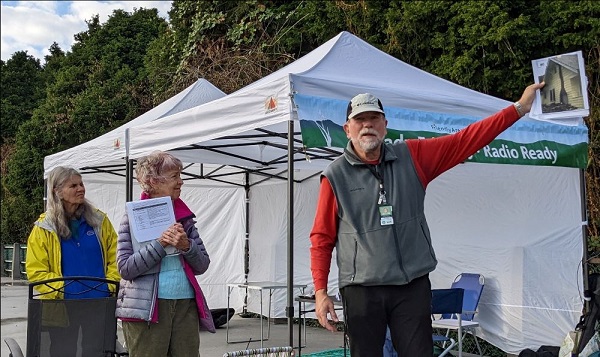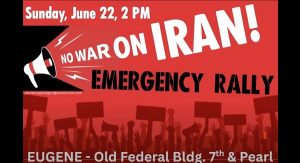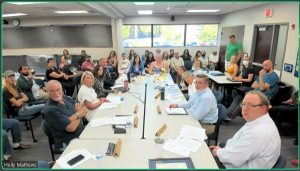Join the ShakeOut Oct. 19 and all-metro drill Oct. 21
3 min read
from Ready Friendly, Ready NW, and staff reports
Join the world’s biggest earthquake drill as part of the Great Oregon ShakeOut on Oct. 19, then join Eugene Springfield Community Emergency Response Teams Oct. 21 for an all-metro field exercise.
This year’s International ShakeOut Day is Oct. 19, when millions of people worldwide will participate in earthquake drills at work, school, or home. Wherever participants are at that time: drop, cover and hold on.
On 10/19 at 10:19 a.m. (local time), you can join people across Oregon practicing earthquake safety. Register at shakeout.org/oregon/ — as of Oct. 4, over 50,000 people in Lane County have already registered for this event! If you cannot participate at that time, you can also register your own ShakeOut drill at any date and time of your choice, even including people in multiple locations through video conferencing.
Then join neighborhood preparedness teams and local CERTs on Saturday, Oct. 21 for the third annual all-metro field exercise. Simulated messages will pass from nearby neighbor teams to amateur “ham” radio operators for relay to the city’s Emergency Operations Center.
Teams practiced Sept. 9 using new radio frequencies assigned by the EOC. One neighborhood team, “Ready Friendly” from the Friendly Area Neighbors, gathered on College Hill Reservoir to form damage assessment teams. They practiced describing mock damages in brief messages and then sending them over two-way radios to neighborhood hams and up tiers of other volunteers.
After ensuring safety for yourself and your family, you can help ensure safety for your neighbors by joining in the neighborhood survey teams. Using the Map Your Neighborhood program, residents are encouraged to place either a HELP or an OK sign in window that is readily visible from the street, to help these survey teams quickly identify neighbors in need.
During an actual emergency, residents can assist emergency personnel by simply collecting and sharing information about conditions in the immediate vicinity of their homes.
Everyone is welcome to join on Oct. 21. This an all-comers event; radios are not needed to help learn by listening, writing, or relaying brief messages using the directed forms and methods.
During the Oct. 21 exercise, city staff will run a simulated Emergency Operations Center to receive the damage reports relayed by neighborhoods. Staff are eager to see how well neighborhoods with teams of radio operators can function as their eyes and ears on the ground. Let’s show Eugene’s new city Emergency Manager Sierra Anderson what the neighborhoods can do!
Beyond the October earthquake preparedness events, Eugene neighborhood organizations participate in preparedness activities year-round.
Neighborhoods conduct monthly Family Radio Service (FRS) radio drills, springtime all-neighborhood field exercises, and the annual all-metro field exercise. Discussion exercises, also called “tabletops,” are available to help neighbors discuss how they might help one another during an evacuation related to wildfire, a chemical leak, and flooding. To get involved, contact your neighborhood organization.
Eugene’s Scott Rosenfeld was recently appointed as Oregon section manager for the Amateur Radio Relay League and is building ARRL’s emergency coordination. Scott explains that participating ham radio operators will be part of “a coordinated, multi-agency, emergency response effort when times get rough due to fire, earthquake, tsunami, chemical spill, train wreck, or any other emergency that might require ham radio as a communications service.” To learn more, see the ARRL website.
As part of the ongoing earthquake preparedness, business owners are also encouraged to explore resources available at the ShakeOut website that can help your workplace become more disaster resilient.
Seven Steps To a Disaster Resilient Workplace suggests the following steps for businesses, with detailed instructions for each step:
- Secure your space
- Plan to be safe
- Organize disaster supplies
- Minimize financial hardships
- Drop, cover and hold on
- Improve safety
- Reconnect and restore
The Ready Business QuakeSmart Program addresses preparedness and mitigation for your staff, surroundings, space, systems, structure, and service.
A disaster-resistant business toolkit can help you minimize risk from unplanned disruptions – whether they are natural, man-made; large or small – through the process of creating or refining your disaster plan, training employees, and exercising your business’ readiness against all hazards.






